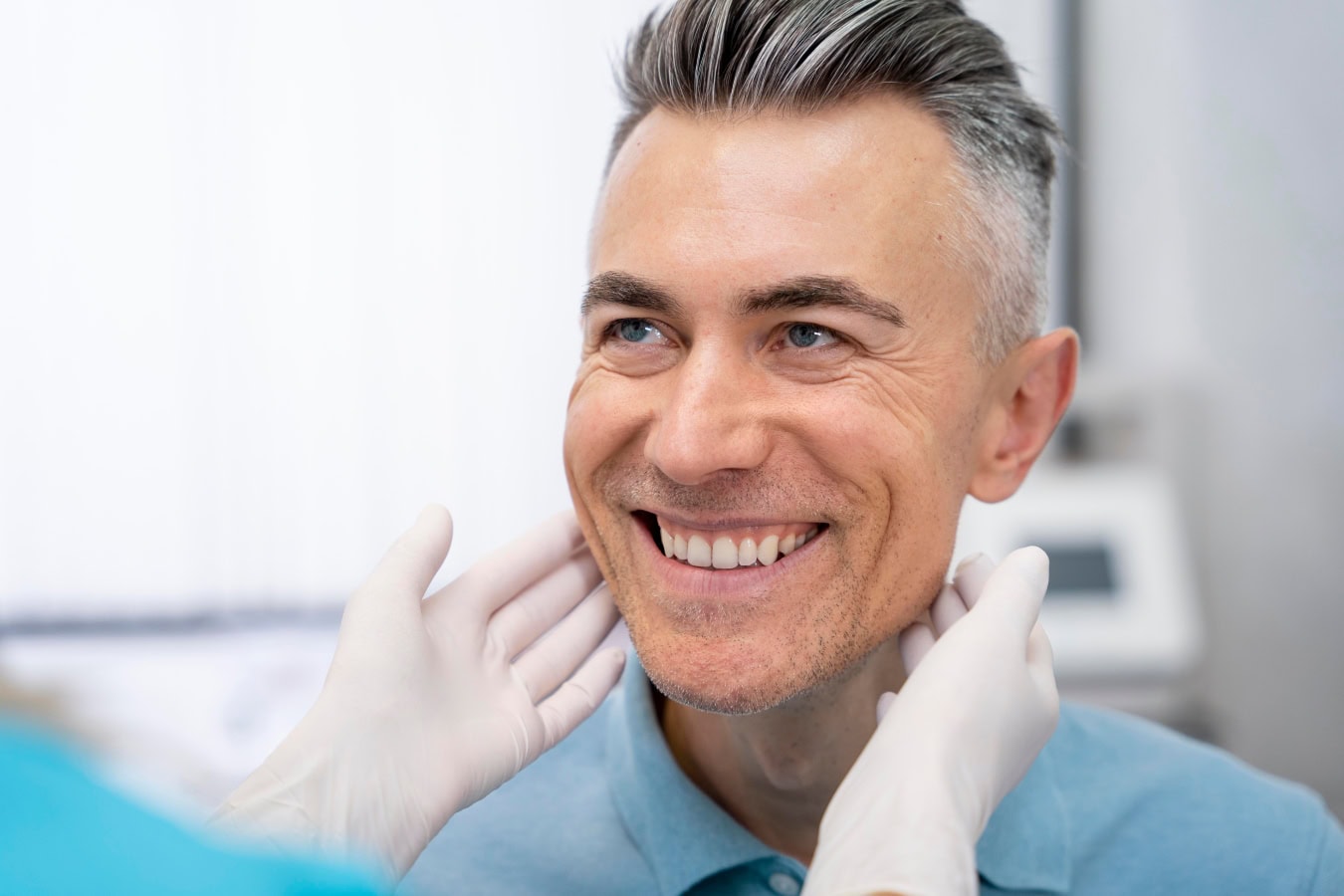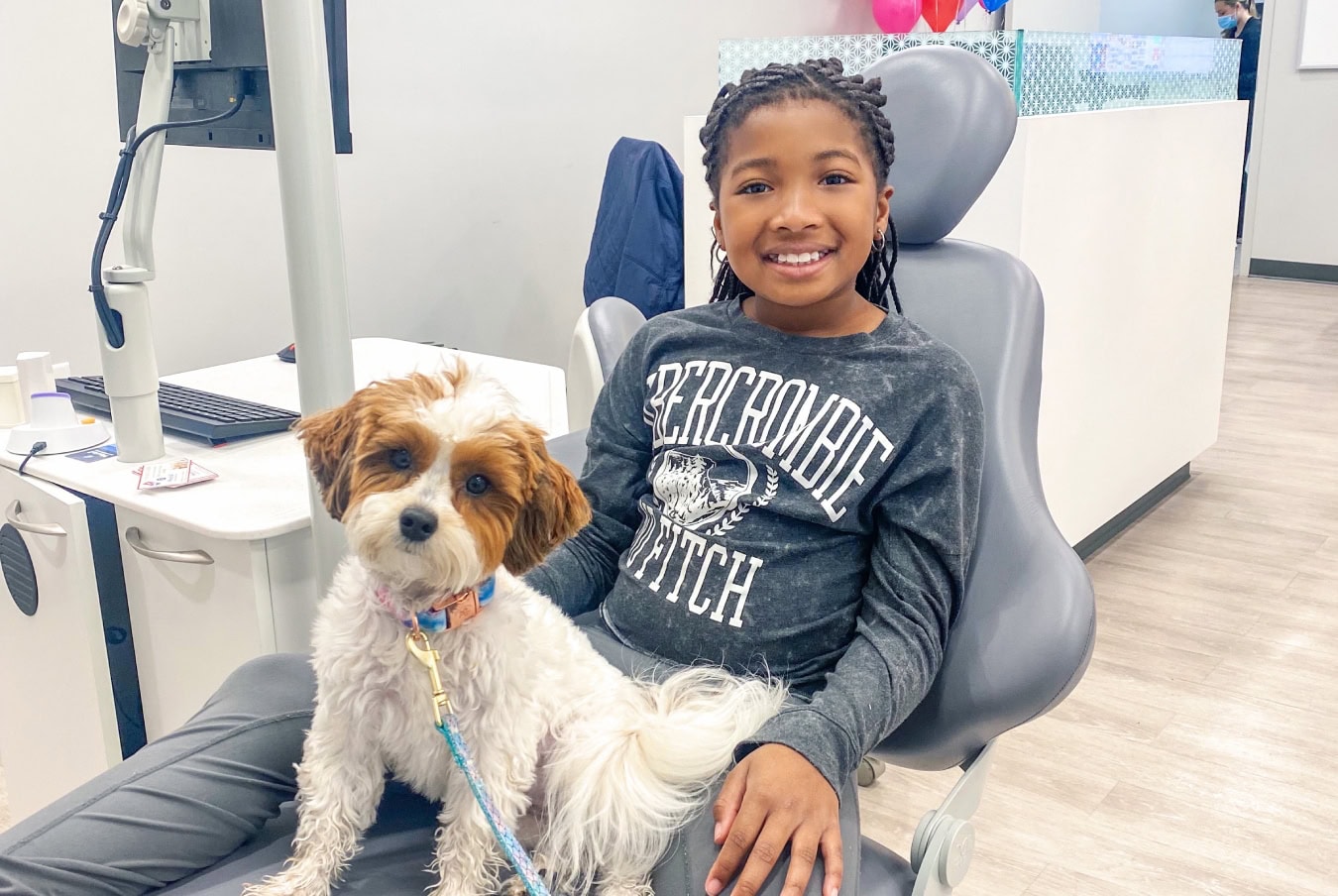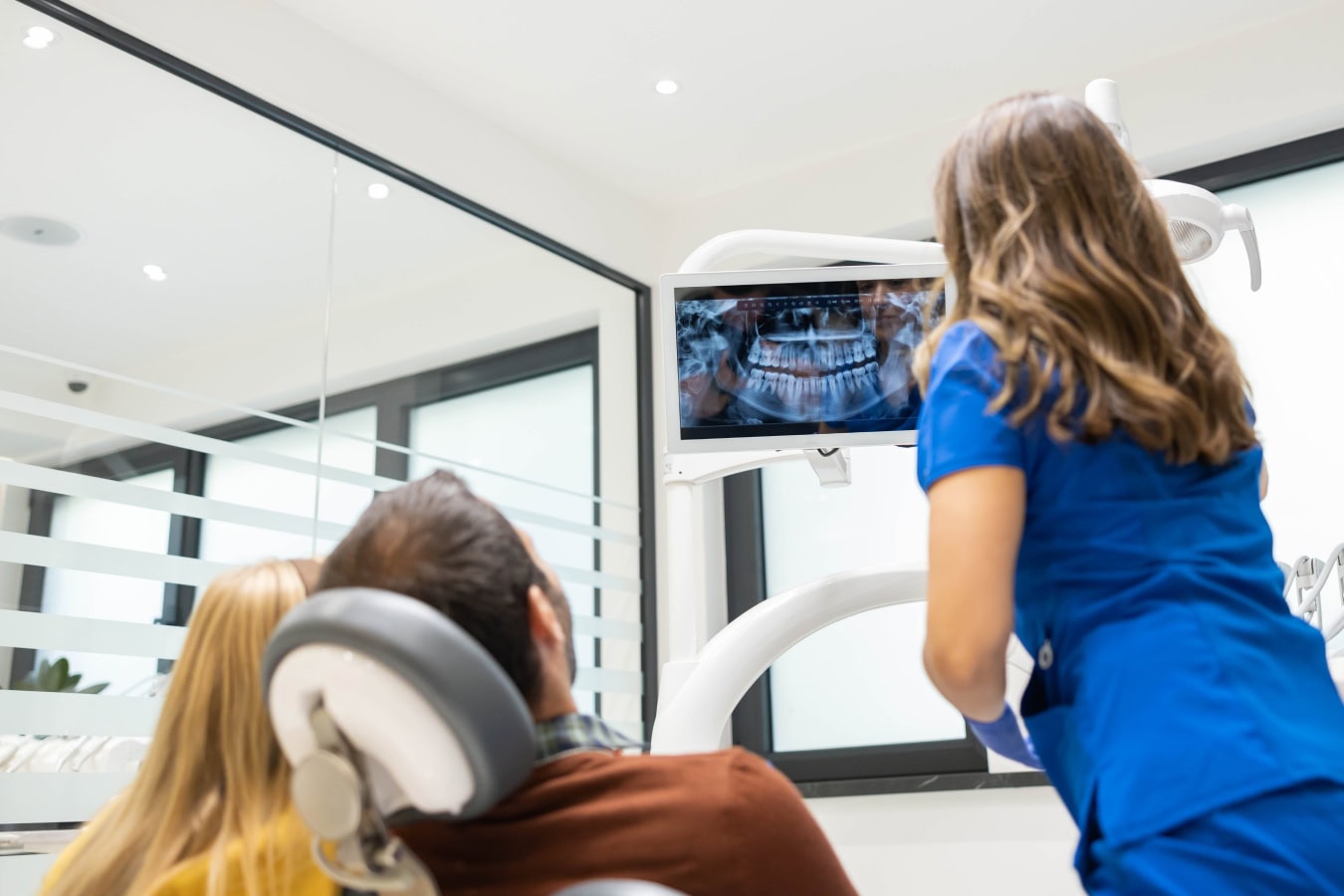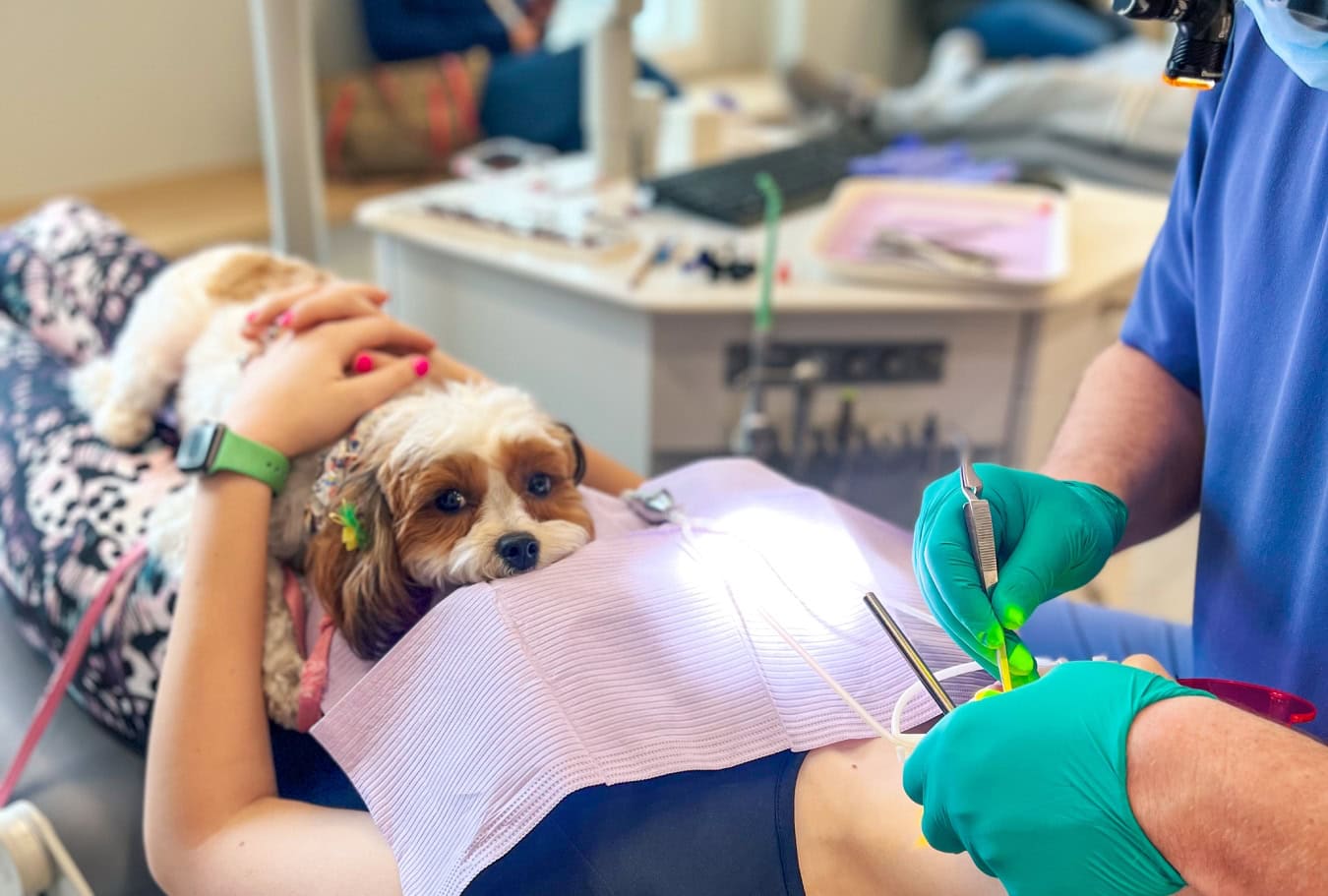
TMD/TMJ Treatment
Jaw pain, frequent headaches, clicking sounds, or difficulty opening and closing your mouth may be signs of TMD, also known as temporomandibular disorder. This condition affects the TMJ—the small but powerful joint that connects your jaw to your skull. When this joint is strained or misaligned, it can cause discomfort that impacts not only your oral health but also your overall quality of life.
At Westfall Orthodontics, we take these symptoms seriously. Using a comprehensive approach, Dr. Westfall evaluates your bite, jaw alignment, and facial structure to determine the root cause of your discomfort. Often, TMJ issues stem from bite imbalances, misaligned teeth, or airway-related concerns that place extra stress on the jaw joint.
Treatment may involve orthodontic solutions that improve how your teeth and jaws fit together, custom appliances designed to relieve pressure, or therapies aimed at restoring balance and function. Our goal isn’t just to manage pain in the short term—it’s to provide lasting relief and improve long-term jaw health.
By addressing the source of your TMJ issues, we help you find freedom from daily discomfort so you can smile, chew, and live more comfortably.

Accelerated Treatment
At Westfall Orthodontics, we understand that one of the most common questions patients ask is, “How long will treatment take?” While every smile is different, we’re proud to offer accelerated orthodontic options that can help reduce treatment time without compromising results. Even complex cases can be finished in as little as 16 months.
Accelerated treatment works alongside braces or Invisalign to gently stimulate the natural bone remodeling process that allows teeth to move. With the help of advanced techniques, specialized appliances, or innovative technologies, tooth movement can often be achieved more efficiently. For many patients, this means reaching their dream smile months sooner than traditional treatment alone would allow.
This approach is especially appealing to busy adults or teens who want to finish treatment quickly for special milestones like graduations, weddings, or professional goals. Even beyond speed, accelerated treatment may also make orthodontics more comfortable by promoting smoother, more consistent movement.
During your consultation, your orthodontist will evaluate whether accelerated treatment is a good fit for your specific needs and goals. While results vary by case, many patients find this option to be a valuable way to shorten their orthodontic journey while still achieving a healthy, beautiful smile.

Airway Orthodontics
Breathing plays a vital role in overall health, and the way your jaws and teeth develop can directly impact your airway. When the jaw is too narrow or misaligned, it may restrict airflow, leading to issues like mouth breathing, snoring, or even sleep-disordered breathing in children and adults. At Westfall Orthodontics, we specialize in airway-focused orthodontics, a modern approach that goes beyond straightening teeth to improve long-term health and well-being.
Dr. Westfall and Dr. Weaver use advanced techniques to evaluate and treat patients with airway-related concerns. By guiding jaw development and creating more space for the tongue and airway, we can help improve breathing, sleep quality, and overall facial balance.
For children, early airway intervention can support healthier growth and prevent problems from worsening later in life. For adults, airway-centered treatment can provide relief from chronic issues like poor sleep, fatigue, or jaw discomfort. Our goal is to create smiles that don’t just look good, but also support healthier, happier lives.

Two-Phase Treatment
Children’s smiles develop in stages, and sometimes early orthodontic care can make a big difference in how their teeth and jaws grow. That’s why we offer two-phase treatment at Westfall Orthodontics—a specialized approach designed to guide growth at the right time and create a healthy, balanced smile that lasts a lifetime.
Two-phase treatment combines early intervention with comprehensive care, taking advantage of a child’s natural growth to achieve better results, often with less invasive treatment later on.
Phase One: Building the Foundation
Phase One typically begins between ages 7 and 10, when children still have a mix of baby teeth and permanent teeth. At this age, we’re not just focused on straightening teeth—we’re looking at how the jaws are developing and how the bite fits together.
During Phase One, treatment may involve expanders, limited braces, or appliances to:
- Guide jaw growth and improve alignment
- Create space for permanent teeth to erupt properly
- Correct crossbites, underbites, or other early bite issues
- Break harmful oral habits, such as thumb sucking
- Improve airway function and encourage proper breathing
By addressing these issues early, we can often prevent more serious problems down the road, reducing the likelihood of extractions or surgery in the future.
After Phase One, your child may enter a “resting phase,” where we monitor growth until it’s time to move into the second stage of treatment.
Phase Two: Perfecting the Smile
Phase Two usually begins in the early teen years, once all of the permanent teeth have erupted. At this stage, the goal is to fine-tune alignment, bite, and overall smile aesthetics.
Treatment typically involves full braces or Invisalign, which allow us to:
- Align teeth for a straight, confident smile
- Correct the bite for proper function and balance
- Improve long-term oral health by making teeth easier to clean
- Enhance facial harmony and overall appearance
Phase Two builds on the foundation established in Phase One, ensuring the teeth not only look great but also function properly for a lifetime. Once treatment is complete, retainers are used to keep the teeth in their new positions.
Why Two-Phase Treatment Matters
By dividing treatment into two stages, we can take advantage of a child’s growth and make changes that aren’t possible later in life. This proactive approach allows us to create healthier, more stable results that last well into adulthood.
At Westfall Orthodontics, we’ll guide you and your child through each step of the process with care and expertise—ensuring the right treatment, at the right time, for the best results.

Ortho Emergencies
You probably won’t experience a true orthodontic emergency because they are rare, but since they do happen from time to time, you need to know how to handle them.
Here To Help
The following orthodontic emergencies and their treatments are listed in order from least severe to most severe. Only the most severe emergencies may require immediate attention by Dr. Westfall.
Food Caught Between Your Teeth
This is not an emergency, but it can be uncomfortable or embarrassing. It’s easily fixed with a piece of dental floss.
Try tying a small knot in the middle of the floss to help remove the food, or use an interproximal brush or toothpick to dislodge food caught between your teeth and your braces.
Ligatures Coming Off
Tiny rubber bands or small, fine wires, known as ligatures, hold the wire to the bracket. If a rubber ligature should come off, you may be able to put it back in place using sterile tweezers. If a wire ligature comes loose, simply remove it with sterile tweezers.
If your wire ligature is sticking out into the lip but is not loose, you can bend it back down with a Q-tip or pencil eraser so it doesn’t irritate your lip. Of course, when one ligature pops off or breaks, others may follow.
Be sure to examine all ligatures. Missing or broken ligatures should be brought to the attention of Dr. Westfall. If a rubber or wire ligature is lost, tell Dr. Westfall so he can advise whether you should be seen.
Discomfort
It’s normal for you to have discomfort for a day or two after braces or retainers are adjusted, but it can make eating uncomfortable. This discomfort is very normal and only for a short time. Try eating soft foods and rinse the mouth with warm saltwater.
Mouth Sores
You may be susceptible to mouth sores. While your braces don’t cause them, they may be made worse by irritation from braces. One or several patches of sores may appear on the cheeks, lips, or tongue. This is not an emergency, but it may be very uncomfortable for you.
Get quick relief by applying a small amount of topical anesthetic (such as Orabase or Ora-Gel) directly to the area with sores using a cotton swab. You can reapply as needed.
Irritated Lips or Cheeks
Sometimes new braces can irritate your mouth, especially when you’re eating. A small amount of non-medicinal relief wax makes an excellent buffer between the metal and your mouth.
Simply pinch off a small piece and roll it into a ball the size of a small pea. Flatten the ball and place it completely over the area of the braces causing irritation. Then, you can eat more comfortably. If you accidentally swallow the wax, it’s not a problem. The wax is harmless.
Protruding Wire
Occasionally, the end of a wire will work itself out of place and irritate your mouth. Use a Q-tip or pencil eraser to push the wire so that it is flat against the tooth. If the wire cannot be moved into a comfortable position, cover it with relief wax. (See Irritated Lips or Cheeks above for instructions on applying relief wax.)
You’ll need to make Dr. Westfall aware of the problem.
In a situation where the wire is extremely bothersome and you can’t see Dr. Westfall anytime soon, you may, as a last resort, clip the wire. Reduce the possibility of swallowing the snipped piece of wire by using folded tissue or gauze around the area. Use a pair of sharp clippers and snip off the protruding wire. Relief wax may still be necessary to provide comfort to the irritated area.
Loose Brackets, Wires, or Bands
If your braces come loose in any way, call Dr. Westfall to determine the next steps.
Brackets are the parts of braces attached to teeth with a special adhesive. They are generally positioned in the center of each tooth. The bracket can be knocked off if you’ve eaten one of those hard or crunchy foods you are instructed to avoid, or if the mouth is struck while at play.
We encourage all patients, especially those with braces, to wear a protective mouthguard while playing sports. If the bracket is off-center, the adhesive may have failed. In this instance, it is best to immediately notify Dr. Westfall, who will determine the course of action.
If the loose bracket has rotated on the wire and is sticking out, and you can’t come to our office immediately, you can do a temporary fix to alleviate discomfort and prevent further damage, but take care to prevent swallowing or another injury.
To put the bracket back in place, use sterile tweezers to slide the bracket along the wire until it is between two teeth.
You Swallow a Piece of Your Appliance
This is rare, but when it does happen, it can be alarming. But stay calm.
If you’re coughing excessively or having difficulty breathing, you may have inhaled the piece into your airways or lungs. If you can see the piece, you may carefully attempt to remove it. DO NOT make an attempt if you could cause harm.
If appropriate under the circumstances, examine your braces for problems that may result from the missing piece, such as looseness or irritation, and treat as specified above.
If you are unable to see the piece and believe it may have been inhaled, call Dr. Westfall immediately.
